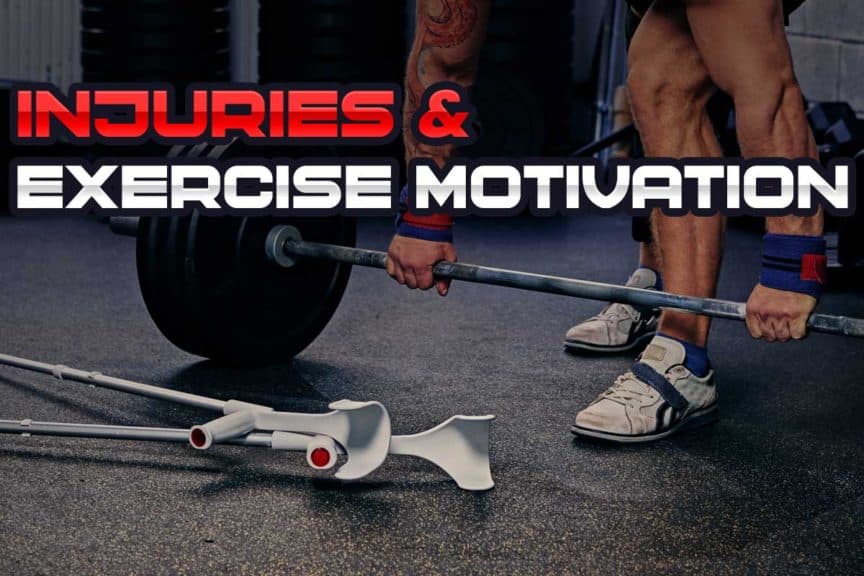Finding the motivation to exercise can be hard enough at the best of times. Finding the motivation to exercise after (or while going through) an injury can feel even more overwhelming. If this happens to be anything you can relate to, I assure you, you’re not alone. It’s almost as if your motivation has been injured in addition to your body.
This article has been written with an empathetic heart, as I know all too well how big this struggle truly can feel. As such, I’ve done my best to lay things out in a practical manner for how best to find the motivation to begin exercising again, either while recovering from an injury or after an injury.
You can likely improve your exercise motivation after injury by:
- Knowing you’re not alone in this experience
- Being honest with yourself about how you’re feeling
- Building a supportive network of individuals
- Drawing inspiration from others
- Using specific behavioral techniques
- Being prepared for setbacks
That, of course, is a massively condensed overview of a rather tricky topic. So, if you want to unpack these concepts to learn why taking each of these steps can be critical and how effective they can be, keep on reading.
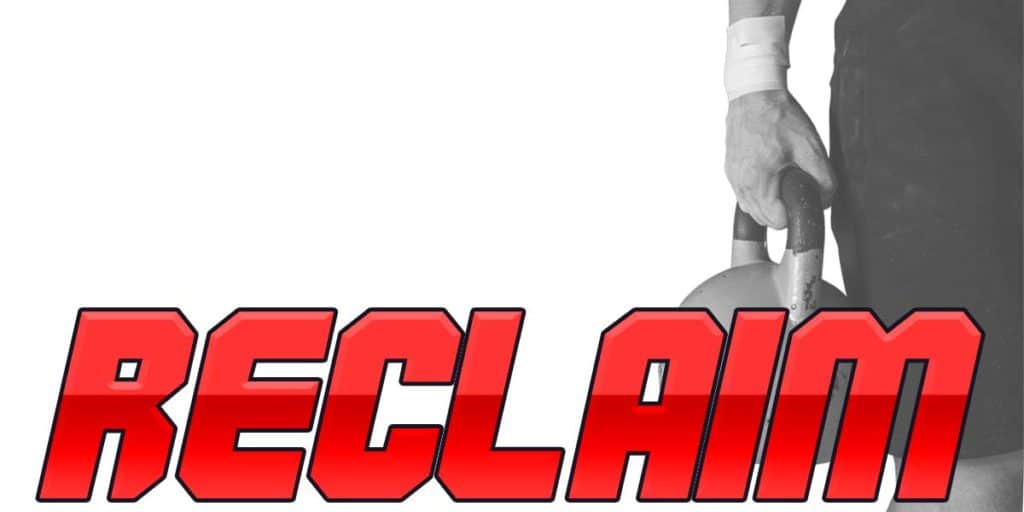
Related article: Gain Energy and Motivation to Exercise After Work: Here’s How
As we kick things off here, I just want to take a few quick sentences to say that I’m genuinely cheering for you and am hoping that you will never give up on your journey, even on the days when you feel you have no motivation at all.
Pain and injury are never a fun experience. Still, it can be a defining one if we choose to acknowledge the struggle yet face the challenge anyways. The only thing better than overcoming pain and setbacks is learning how strong we are in the process.
Alright, let’s get to it!
Step 1: Keep this one thing in mind
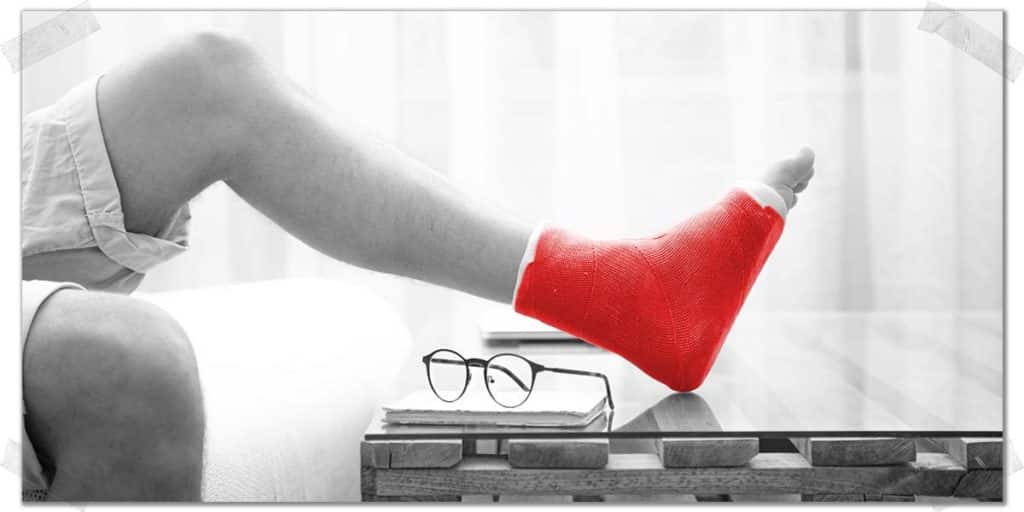
When pain and injury keep you from doing what you love, it can be not only a disheartening experience but also a very isolating experience as well; it can feel as if you’re stranded on an island all by yourself as the rest of the world carries on with its ability to exercise and move around without any issues. At the same time, you’re left to helplessly watch. At least, this is what it’s felt like for me.
So, I would implore you to keep this one thing in mind:
Injury, pain, and setbacks will happen to everyone at least once in their life. You may feel like this is only happening to you in the moment, but reminding yourself that the scenario you’re in (i.e., losing heart or motivation for exercise due to injury) will happen to everyone can help lessen the “sting” as you work to reclaim your motivation.
In other words: you’re in good company, and it can help to remember that more people can relate to the loss of motivation to exercise after their injury or condition than you’re likely aware.
Here are some injury and condition-related facts that help to prove my point:
- Upwards of 80% of the global population will experience at least one episode of debilitating lower back pain within their lifetime.1
- 1 in 4 people above 60 years old has one or more partial tears in their rotator cuff muscle (a group of muscles that help to move the shoulder).2
- Approximately 20 – 50 million individuals around the world are injured in motor vehicle accidents every single year.3
- It’s estimated that there are over 2 million high school sports injuries every year. 500,000 of these injuries require a doctor’s visit and 30,000 require hospitalization.4
You’re not alone on an island; you’re experiencing a profoundly common phenomenon that human beings go through, and giving yourself permission to be brave as you work to reclaim your motivation is a profoundly beautiful step to take and one that says a lot about the beautiful character within you.
Hopefully, remembering this can help to take some weight off your shoulders or remove any guilt that you may be experiencing.
Whether your injury is minor or major, a challenge is a challenge; this isn’t about who has it worse; it’s about remembering that millions of other people in this very moment can relate to what you’re experiencing as you’re looking to get your active lifestyle back on track.
Step 2: Be honest with yourself
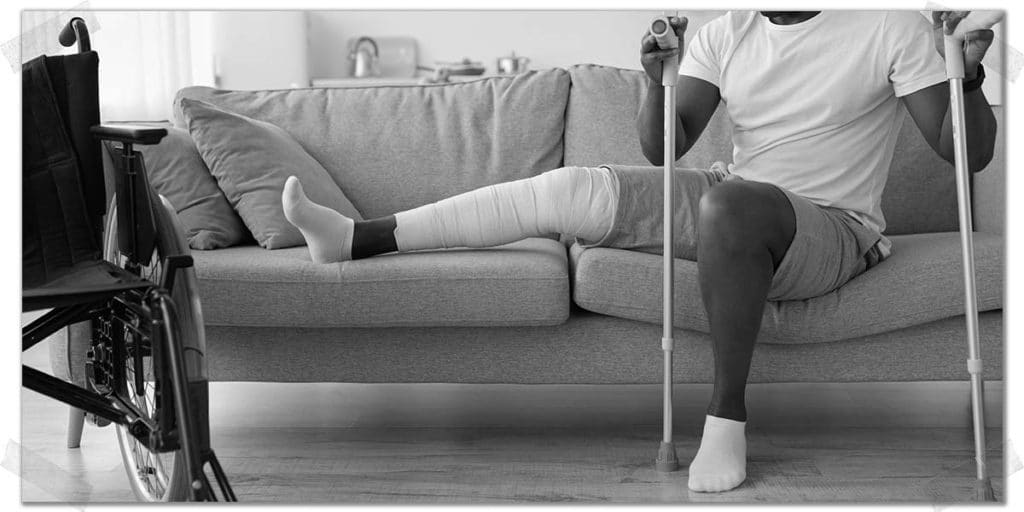
There’s a mentality that many individuals subscribe to when going through challenges (physical injury, reclaiming motivation, etc.) that involves “sucking it up” and “soldiering onwards” without acknowledging to themselves (or others) how they’re truly feeling in the moment. I certainly believe there is a time and place for this mentality; however, for the average individual, I believe it’s one that should be used more sparingly rather than commonly.
Taking time to be honest with yourself and reflect on how you’re feeling can be a profoundly powerful action to take. Whether you do this simply by yourself, share how you’re feeling with a friend, or a professional counsellor (more on that later in this article), giving yourself permission to open up how you’re feeling can help provide you with a sense of direction on how to best move forward in your journey.
Related article: Trigger Workouts: How They Solve Your Biggest Fitness Problems
Step 3: Build your network
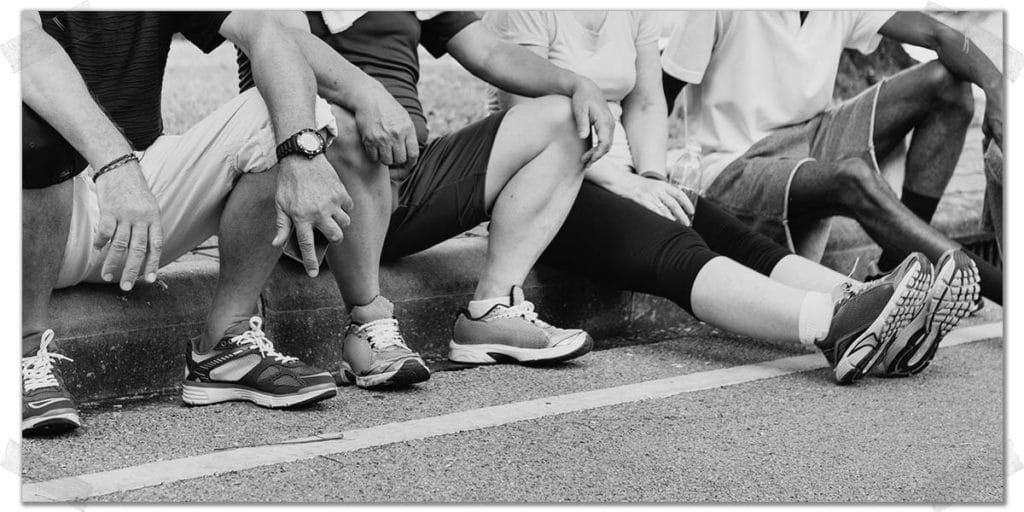
Being the lone wolf when working on improving your situation (be it finding motivation, becoming healthier, or improving any other aspects of yourself) likely won’t yield the psychological benefits that can be obtained by building a team of trusted friends, loved ones, or professionals. This is often termed the therapeutic alliance.
There certainly are times when it’s good to do a bit of work on your own, but I’d advise doing so strategically. Your outcomes for finding and building motivation will likely be much better when working with a therapeutic alliance.
Motivation is a complex phenomenon, and scientific evidence shows that working with others can be overwhelmingly helpful in fostering and solidifying improvements in motivation.5–7
Working with a trained councilor
If you have a genuine desire to find your motivation, and it’s within your means to do so, I would strongly advise that you consider counselling from a trained psychologist. I have received counselling from several psychologists over the years, which has been profoundly helpful in multiple ways.
As I like to say, counselling sessions are like physical therapy for your brain.
There is a strongly validated form of psychotherapy called motivational interviewing (MI) that many councilors are trained in, which can help to uncover the core reason(s) for your struggle(s) with motivation.8,9
Unfortunately, I’m well aware that not every individual has the available funds for a trained councilor. If that’s the case, there may be local programs within your area that can help to overcome this issue. If this isn’t possible, I’d recommend looking on the internet or asking around your local community for programs that work with those who otherwise don’t have the access or funds to work with a trained professional.
Finding supportive individuals
Anyone who supports you in your efforts to get back into exercising and is willing to help you throughout your journey is worth bringing on board to be part of your support network.
The truth of the matter is that your odds of achieving the success that you’re after will be much better if you’re surrounded — either physically, virtually, or even just in spirit — by those who are willing to support you. What this “support” looks like can vary greatly based on your particular needs. However, there are plenty of ways to start building a community or network of individuals who have your back.
Here are some very simple ways you can start to build a community of supporters:
- Facebook has groups that you can join
- Reddit has numerous subreddits that you can join and post in
Remember: I’d also encourage you to remember that when you reach out for help from others, you will very likely help someone in return, whether you know it or not.
Step 4: Set behavior-based goals

When it comes to motivation for exercising, it may be helpful to view the process of getting in shape or getting back on track as one largely rooted in behavior-based change rather than physical change.
Our behavior dictates much of our actions (or inactions). As a result, focusing on meeting goals that are based on our behaviors can be much more empowering than traditional fitness goals that are outcome-based.
It can feel daunting or even defeating to focus on all of the time and physical effort required to get back on track with exercising, getting fit again, or attaining any other outcome-related desire. And when this happens, we can feel like, “what’s the point?”
If you are prone to this phenomenon, you may want to consider setting goals that fixate on your behavior towards exercising or working on your fitness. The reason for doing so is rooted in the fact that behavior-based goals ground us with a powerful sense of control that traditional outcome-based goals do not.
Examples of outcome-based goals are:
- Losing ten pounds
- Dropping two inches off of your waist size
- Adding fifteen pounds onto your bench press
Examples of behavior-based goals are:
- Performing any enjoyable physical activities for twenty minutes three times per week for four weeks in a row.
- Drinking two extra glasses of water every day for one consecutive week.
- Meditating or practicing mindfulness for at least five minutes per day on Mondays, Wednesdays, and Fridays.
- Performing your favorite stretching exercise(s) for twenty minutes twice per week.
Physical exercise and exercise regimens are often not only much more manageable to perform but often much more effective when we enjoy the process. As a result, make sure to consider setting some goals that are largely based on your behavior as opposed to the outcome that you’re after.
You’ll be surprised how much easier it is to find motivation for exercising after your injury or setback when you’ve set goals that give you a sense of control, which help you feel good throughout the process of getting back on track.
Contrast this with outcome-based goals, which only provide a reward after a long timeframe of hard work (not ideal at all). If you’re in need of finding and maintaining motivation, celebrating the victories (no matter how small) along the way is imperative to do. And when you’re smashing goals that are based around your behavior, you’ll feel energized and find your motivation to keep pressing on only becoming stronger and stronger.
Step 5: Draw inspiration from others
Human beings love stories, especially ones that we relate to. We are drawn to, and often pulled into, stories that play on our emotions in healthy ways. As relational beings, when we come across another individual who has walked down (or still is walking) the path we find ourselves currently navigating, we are innately drawn to them.
As such, there can be immense inspirational power in finding others who have faced (and hopefully overcome) what you’re now battling through. These individuals can help nourish our spirit by reminding us that we’re not alone in what we’re facing and that what one individual can do, so can another.
Whether you find other individuals on YouTube, through a Facebook group, or by any other means, taking the time to learn their story can be profoundly motivating.
A personal example:
As someone who has had to rehab significant shoulder injuries as an athlete, I’ve often found immense inspiration in the shoulder rehabilitation journey of Drew Brees, which he details thoroughly in his book, Coming Back Stronger.
I also experience profound inspiration every time I watch a video of Inky Johnson talking about his life-altering shoulder injury that left him with a paralyzed right arm after a devastating (and life-threatening) injury he received while playing football. I’m not only continually amazed by his story but am always highly inspired by it as well.
The YouTube video below is one of my favorite videos involving Inky Johnson telling his story:
Regardless of whomever you find to be inspirational — be it someone with a story similar to yours or someone whom you simply admire — keep your thoughts fixated on the reasons why you find them to be inspiring. Fixating our mind and its thoughts on inspiring individuals and their good stories can be very healthy for our spirit, which can absolutely lead to higher levels of motivation for wanting to make a change, such as beginning to exercise again after injury.
Step 6: Avoid all-or-none thinking
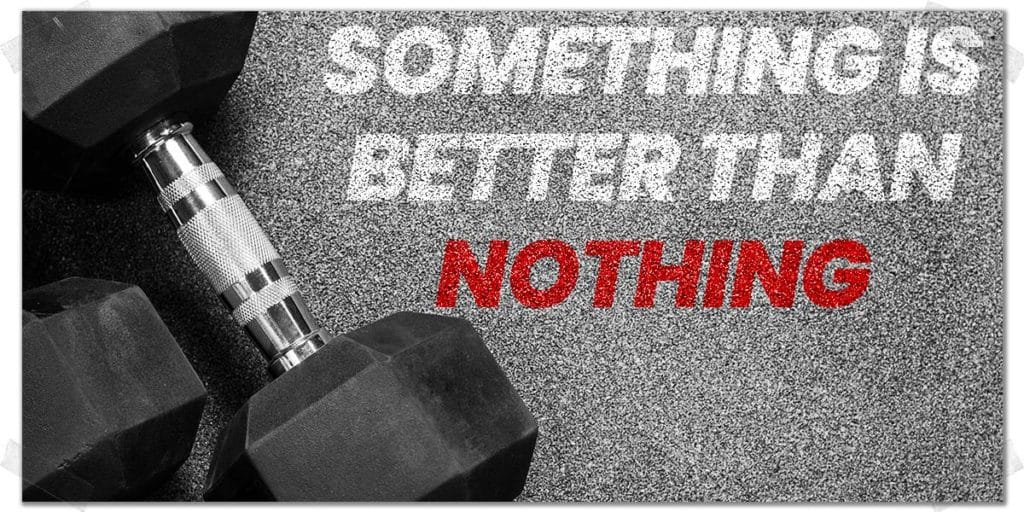
When it comes to wanting to exercise (either after injury or for any other reason), one of the biggest traps individuals can fall into is thinking that a workout or physical activity session isn’t worth doing if we can’t do it in its entirety.
Something is pretty much always better than nothing for physical exercise. Not only will you reap more physical benefits when opting to do something rather than nothing, but you’ll continue to foster the mental habit and subsequent behavior to keep your “mental momentum” going for staying physically active.
In other words: staying in the habit of making an effort to exercise — even if it’s a short exercise session — will help ensure that you don’t fall off the horse entirely.
The other added benefit here is that often the hardest part of committing to an exercise session is getting started; after moving around for a couple of minutes or performing your first exercise, you’ll find that your mental energy changes for the better. Once this happens, continuing with more physical activity within the session is much easier to do.
Pro tip: Commit to the first ten minutes of an exercise or physical activity session. In my years of exercising and working out, on days where I’ve had no desire to be active, I’ve found that more than 90% of the time, after ten minutes of moving, I want to continue with the rest of the activity session.
Remember, at least half of this entire battle (if not much more) is based on behavior. By utilizing behavior tactics that help to make the chore of exercising feel less overwhelming, you’ll have much better chances of immediate and long-term success.
Step 7: Give yourself some grace along the way

Everyone falls off the horse with an activity or pursuit at some point in their life. Whether it’s exercising or any other pursuit, we are all prone to falling out of rhythm to only then find ourselves struggling to pick it back up afterwards. As such, getting back on track is rarely (if ever) a linear process that doesn’t involve a series of setbacks.
As with step 1 in this article, it may help to remember that this is something we all experience; you are not alone. We all struggle, and thus, it’s a good idea to give yourself some grace with this rather than beat yourself up. There will likely be good and bad days for tapping into your motivation.
There’s nothing wrong with you; you are not psychologically “broken.” You’re a human being, and human beings aren’t machines with a simple motivation “on” switch.
By expecting yourself to not struggle or waver along the way as you re-commit to exercising after an injury, you are placing a high level of expectation along yourself that may do more harm than good.
Final thoughts
Finding the motivation to exercise after an injury or physical setback isn’t always easy. You are not the first to experience this, nor are you the last. Take the tips and steps within this article and use them as a starting point for finding the means to become more active and re-engage with the active lifestyle you’re hoping to achieve.
I’m rooting for you! And remember: you are capable of making great things happen!
References:
1. Manchikanti L. Epidemiology of low back pain. Pain Physician. 2000;3(2):167-192.
3. Road Safety Facts. Association for Safe International Road Travel. Accessed August 5, 2022. https://www.asirt.org/safe-travel/road-safety-facts/
5. Powell A. Therapeutic Alliance and Its Potential Application to Physical Activity Interventions for Older Adults: A Narrative Review. J Aging Phys Act. 2021;1(aop):1-5.
9. Moyers TB. The relationship in motivational interviewing. Psychotherapy. 2014;51(3):358.

Hi! I’m Jim Wittstrom, PT, DPT, CSCS, Pn1.
I am a physical therapist who is passionate about all things pertaining to strength & conditioning, human movement, injury prevention and rehabilitation. I created StrengthResurgence.com in order to help others become stronger and healthier. I also love helping aspiring students and therapists fulfill their dreams of becoming successful in school and within their clinical PT practice. Thanks for checking out my site!

